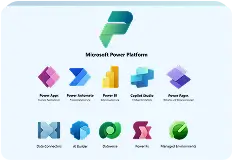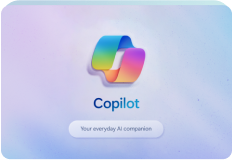Table of Contents
Microsoft’s.NET 8 debuted on November 14 with a slew of new features and upgrades. This post outlines the most important improvements in .NET 8, in my opinion, and contains code examples to help you get started with the new features.
To utilize the code samples included in this tutorial, you must have Visual Studio 2022 installed on your system. If you do not already have a copy, you can get Visual Studio 2022 from the below mentioned-link.
Visual Studio 2022 >>> https://dotnet.microsoft.com/en-us/download
The features of.NET 8, as published on the official Microsoft DevBlog, include a wide range of innovations. This update includes thousands of improvements to .NET performance, stability, and security.
15 Key Features Of .NET 8 In 2024:
1. The Update In C# 12:
- .NET 8 includes C#12. In C# 12, every class or struct may now have primary constructors defined in a simple syntax, removing the need for boilerplate code to initialize fields and attributes.
- In addition, we may utilize new default values for arguments in lambda expressions to increase code expressiveness.
- There is no need for additional overloading or null checks when handling optional parameters.
- Furthermore, you may use the directive to alias any type, not just named ones.
Find Out What’s New In C Sharp # 12 2024?
2. Garbage Collector Enhancements:
The.NET garbage collector now supports dynamic memory restrictions for cloud-native apps, particularly those running on Kubernetes. This capability will be especially useful in circumstances where services are hosted in a cloud.
To use this functionality, utilize the RefreshMemoryLimit() API.
GC.RefreshMemoryLimit();
The following code snippet demonstrates how to renew GC settings related to the RAM limit.
AppContext.SetData(“GCHeapHardLimit”, (ulong)100 * 1_024 * 1_024);
GC.RefreshMemoryLimit();
3. ASP.Net Core 8:
ASP.NET Core 8 applications can enhance speed by up to 18% compared to .NET 7. Additionally, native Ahead-of-Time (AOT) support allows for self-contained apps to be built into native code, leading to lower deployment sizes, faster startup, and decreased memory use.
4. JSON Improvements:
Several improvements have been made to the JSON serialization and deserialization methods in .NET. This includes support for floating-point hardware and the introduction of new numeric types such as half-structs.
Furthermore, in previous versions of.NET, any property in your JSON payload that is not a POCO type was disregarded. .NET 8 allows you to make all data members accessible in the JSON payload.
To use this newly added capability, you must first annotate your POCO type with the System.Text.Json.Serialization.JsonUnmappedMemberHandlingAttribute is an attribute. This is seen in the code sample provided below.
[JsonUnmappedMemberHandling(JsonUnmappedMemberHandling.Disallow)]
public class Employee
{
public int Employee_Id { get; set; }
}
If you deserialize an instance of the Employee class that has a member name that is not part of the POCO type, a JsonException will be issued. For example:
JsonSerializer.Deserialize<Employee>
(“””{“Employee_Id” : 1, “Department_Id” : 1 }”””);
The following is the exception message you will get when the code above is performed.
// JsonException : The JSON property ‘Department_Id’ could not be mapped to
// any .NET member contained in type ‘Employee’.
5. Entity Framework Core 8
Entity Framework Core 8 now supports complicated types for value objects (without identity), such as Address and Coordinate.
You can discover more support for lazy-loading of no-tracking queries in your software.
6. Time Abstraction:
The newly introduced TimeProvider class and ITimer interface support time abstraction, allowing you to fake time in test scenarios. The time abstraction functionality includes support for the following:
- Create a new timer instance.
- Retrieve local or UTC time.
- Retrieve a timestamp to measure performance.
The TimeProvider abstract class is meant to be easily integrated with mocking frameworks, having methods that allow for smooth and complete mocking of all of its characteristics.
7. Cryptography Enhancements:
As cyber threats grow globally, new support for SHA-3 makes.NET 8 applications more secure by providing an alternative to SHA-2. Also, in.NET 8, the RSA ephemeral operations have been moved to bcrypt.dll rather than ncrypt.dll, removing the need for a remote procedure call to lsass.exe.
The System.Security.Cryptography & RandomNumberGenerator type in.NET 8 provides a number of randomness-related methods. These methods include GetItems(), which chooses items at random from an input collection, and Shuffle(), which lowers training bias in machine learning.
8. Blazor Update:
Blazor is a web framework in the.NET environment that enables dedicated.NET developers to create interactive web apps in C# and.NET rather than standard JavaScript. It allows for the production of single-page applications with components operating on both the server and client sides, resulting in a more unified web development environment.
- Server-side rendering (SSR) in Blazor components now allows content changes to be sent over the response stream. This feature significantly improves the user experience.
- Blazor SSR now has a more efficient method of managing form postings, which is one of its new features. This feature simplifies the construction of online forms and the management of submissions.
With all of these enhancements, full-stack web UI is the most important development in the Blazor ecosystem, and it is intended to establish Blazor as the “go-to UI framework” for modern .NET online apps.
9. Naming Policies:
JsonNamingPolicy introduces the latest naming rules for converting property names to snake_case (with an underscore) and kebab-case (with a hyphen). Utilize these policies in accordance with the JsonNamingPolicy.CamelCase Policy:
var options = new JsonSerializerOptions
{
PropertyNamingPolicy = JsonNamingPolicy.SnakeCaseLower
};
JsonSerializer.Serialize(new { PropertyName = “value” }, options);
// { “property_name” : “value” }
10. Extended AI & ML Support:
Machine learning and artificial intelligence are critical technologies for today’s software industry. Microsoft increased AI and ML support in.NET 8, making it easier for developers to incorporate complicated algorithms and models into their projects.
AI and ML support for .NET developers offers improved data analysis, predictive modeling, and automation. ML frameworks, such as ML.NET, enable developers to incorporate machine learning into applications. AI technologies help with code analysis, debugging, and automating repetitive activities, hence increasing overall productivity and allowing the development of more intelligent and data-driven applications.
11. Native AOT Support:
When an application is published as a native AOT, it may be distributed as a standalone version, which consolidates all of its dependencies into a single file and eliminates the need for a separate runtime. This capability was initially introduced in.NET version 7.
.NET 8 includes the following advancements to Native AOT publishing:
- Improves macOS support for the Arm64 and x64 architectures.
- You may select whether to optimize for speed or size. By default, the compiler evaluates the application’s size and chooses to generate fast code. Nonetheless, you may optimize for one or the other using the MSBuild attribute. For further information, see “Optimize AOT deployments.”
- Reduces Native AOT program size by up to 50% on Linux. The following table shows the size of a “Hello World” application published using Native AOT on.NET 7 as opposed to.NET Core 8.
12. API Authoring:
The increased API authoring capabilities allow for a more thorough and efficient development approach. Let’s look at the modifications to API writing in the new version.
The API Project Template consists of.HTTP files.
With the addition of a.http file to the API project template, developers may now utilize Visual Studio’s new HTTP editor to send requests to defined endpoints inside the application. This streamlined strategy allows developers to test and modify their APIs more rapidly, resulting in a more efficient development process.
Improved Form Binding Support in Minimal APIs
This version includes support for form binding in basic APIs across a wide range. This enhanced support includes IFormCollection, IFormFile, IFormFileCollection, and OpenAPI metadata. Using these developments, developers may create more durable and adaptive APIs that fulfill a wide range of requirements.
These API authoring enhancements in.NET Core 8 will provide developers with a more robust and smooth experience while working with ASP.NET Core.
13. Support For Intel AVX-512 Instruction Set:
.NET Core 3.0 suggested SIMD support by including platform-specific hardware intrinsics APIs for x86/x64. .NET 5 later expanded this support to Arm64, and with the release of.NET 7, cross-platform hardware intrinsics were added. .NET 8 improves SIMD capabilities by adding Vector512<T> and expanding support for Intel Advanced Vector Extensions 512 (AVX-512) instructions.
.NET 8 adds support for the following essential AVX-512 features:
- 512-bit vector operations.
- An extra 16 SIMD registers.
- Additional instructions are available for 128-bit, 256-bit, and 512-bit vectors.
Furthermore, even if you do not explicitly use Vector512- or Avx512F-specific instructions in your code, you will most likely benefit from better AVX-512 support. Using Vector128<T> or Vector256<T> allows the JIT compiler to access more registers and instructions implicitly.
Finally, if your hardware supports AVX-512, Vector512.IsHardwareAccelerated will return true.
14. Code Generating Enhancements:
Microsoft has improved code generation and just-in-time (JIT) compilation in.NET 8 as well:
- Improved performance of containerized apps in cloud-native settings.
- SIMD enhancements for better parallelization
- Profile-guided optimization (PGO) enhancements
- Dynamic PGO is enabled by default.
- Improved performance for the Arm64 architecture and quicker code generation with JIT.
15. Support For HTTPS Proxy:
Until now, HttpClient’s proxy types all permitted a “man-in-the-middle” to observe which site the client was connected to, even HTTPS URLs. HttpClient now supports HTTPS proxy, which establishes an encrypted connection between the client and the proxy, allowing all requests to be processed with complete anonymity.
To activate an HTTPS proxy, specify the all_proxy environment option or programmatically manage the proxy using the WebProxy class.
Unix: export “all_proxy=https://x.x.x.x:3218 Windows: set all_proxy=”https://x.x.x.x:3218”
You may also use the WebProxy class to programmatically manage the proxy.
Conclusion:
As the.NET environment changes, developers must keep up with the latest innovations and best practices. .NET 7 and.NET 8 both have great features and enhancements. NET Core 8 is a more tempting solution for developers looking to guarantee their apps are future-proof. This updated edition provides a strong foundation for the creation of contemporary apps.
The vast feature set of.NET 8 Preview 4 demonstrates the Microsoft team’s commitment to providing a foundation for powerful and scalable online application development.
As ASP.NET Core paves the way for the next generation of web apps, take advantage of these upgrades with the help of a top.NET web application development firm to explore new options. Additionally, keep a watch out for forthcoming releases.
If you’re still confused about moving from.NET 7 to.NET 8, contact our .NET developer help team!






















